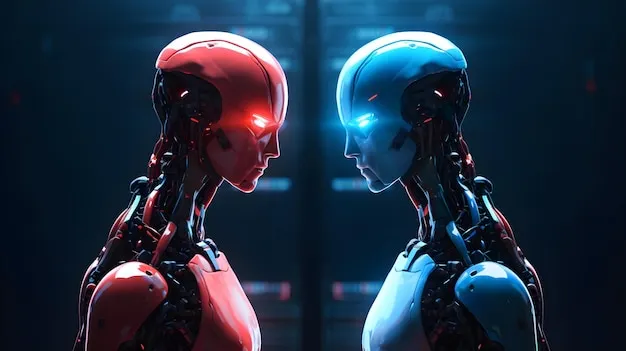Cybersecurity is quietly undergoing a big shift, not just in the technology used but also in the way people think about protecting digital assets. More security teams have begun thinking like attackers, anticipating threats before they even happen. At the center of this new approach is generative artificial intelligence (AI). This new generation of AI realistically simulates cyber attacks, allowing defenders to spot vulnerabilities early and fix them before attackers discover them.
Traditionally, cybersecurity teams worked reactively. They would set up strong defenses such as firewalls and antivirus software, and then wait to see if someone tried to break in. This method was straightforward but limited. If attackers found an unexpected loophole, the security teams would suddenly find themselves scrambling. Generative AI completely changes this situation. Instead of passively waiting for attacks, it actively searches for weaknesses by continuously simulating cyber threats. It’s similar to training for a sports match by practicing against an opponent who knows your weaknesses and can exploit them realistically. This proactive approach helps defenders find and fix weak points early, rather than dealing with them after a breach occurs.
Major tech companies like Microsoft are already using generative AI internally to simulate attacks. Microsoft created two separate AI components to train its cybersecurity. One acts like a hacker, continuously creating new phishing scams and malicious software. Another AI acts as the defender, working to identify and neutralize these threats. Each simulation helps the defensive AI improve, allowing it to recognize threats faster each time. Cybersecurity providers like Palo Alto Networks also use AI-driven strategies. These companies use generative AI to identify subtle yet critical signs, such as unusual login times or small but suspicious file transfers, which might be missed by traditional systems.

Historically, cybersecurity testing was conducted by human experts called penetration testers. These professionals manually simulate attacks to uncover vulnerabilities. However, manual tests are costly, slow, and typically aren’t frequent enough to catch all potential security issues. Generative AI automates this testing process, enabling continuous and adaptive security assessments tailored to specific business operations. For example, generative AI might specifically target systems connected to external suppliers, cloud storage, or software updates, as these areas are commonly exploited by attackers.
However, as generative AI becomes more common, it also brings new risks. Cybercriminals now have access to these same tools, enabling them to create malware and phishing campaigns that rapidly change, slipping past traditional detection methods more easily. Technologies like deepfakes also present serious challenges, allowing criminals to convincingly impersonate trusted individuals through fake voice and video calls. These threats complicate the cybersecurity landscape, forcing professionals to continuously rethink their defensive strategies.

AI-driven security tools themselves can become targets, too. Attackers might intentionally feed misleading data into these AI systems, trying to confuse or deceive them into missing real threats. To counteract this vulnerability, many organizations now use specialized monitoring tools specifically designed to watch their own security AI systems, ensuring these systems aren’t manipulated or tricked.
Despite the advantages AI brings, it’s essential to understand its limitations. AI is great at quickly processing massive amounts of data and detecting unusual patterns, but it still lacks human intuition and deeper judgment. Understanding the motivation or broader strategic context behind cyber attacks remains a uniquely human skill. As a result, modern cybersecurity teams increasingly rely on human-AI collaboration. AI handles repetitive tasks and routine monitoring, while human analysts focus their efforts on complex threats that require strategic understanding and human insight.
Looking to the future, cybersecurity might increasingly depend on networks of intelligent AI agents working together, sharing information, and rapidly responding to emerging threats. Imagine a scenario where one AI notices signs of a new phishing method discussed on hacker forums and immediately alerts other AI defenders to update their protective measures. This kind of collaborative network could significantly enhance how quickly and effectively security teams respond to threats.
Ultimately, generative security marks a major step forward, but technology alone won’t resolve all cybersecurity challenges. Cybersecurity fundamentally involves understanding people, predicting their actions, and effectively countering their strategies. The best cybersecurity solutions will combine AI’s analytical strength with human judgment, intuition, and ethics. Cybersecurity’s future won’t depend solely on smarter algorithms but on smarter collaboration between technology and the people who wield it.


